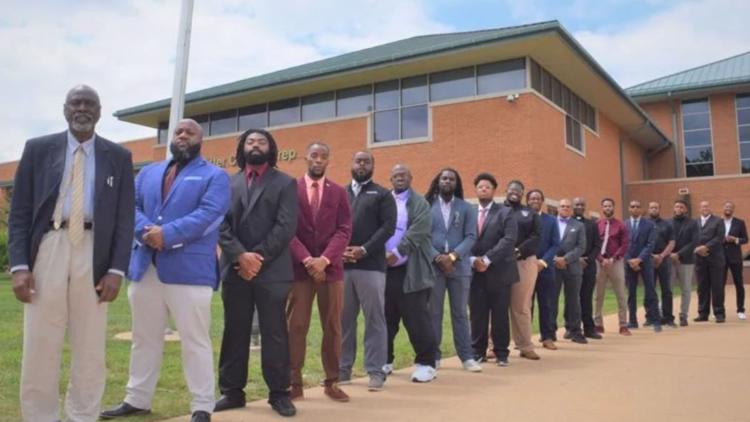ST. LOUIS — The year was 1979. President Jimmy Carter was in the White House, Sony had just released the Walkman, The Sugar Hill Gang released their first commercial rap hit, "Rapper's Delight" and Stephen King’s“The Dead Zone” was on the “best-sellers” list.
In St. Louis, there was a less heralded phenomenon being birthed on the educational front. The St. Louis Archdiocese’s board of Catholic Education established a community representative task force to conduct a survey. For two years, they asked Black North St. Louis residents and parents what they wanted from a Catholic school in their neighborhood. The community’s response led to the founding of Cardinal Ritter, a co-educational college preparatory high school. Named in honor of Cardinal Joseph Ritter, the school opened, in August of 1979, in the Walnut Park neighborhood.
“We were the only school that began based on ‘what black kids need.’” said Tamiko Armstead, President of Cardinal Ritter. “They went to the community to get those answers and that’s where our mission of ‘Faith, Academic Excellence and Leadership’ came from.
Today 43 years after its founding, Cardinal Ritter celebrates astonishing accomplishments that include a 100% Graduation Rate, 100% College Acceptance Rate, 30+ Extra-Curricular Activities and $5.6 million in College Scholarships last year.
Recently Armstead recognized the school had achieved and surpassed another important recommendation from the late 1970s survey. Defying national trends of only 2% Black males in teaching institutions, she realized that 40% of Cardinal Ritter’s faculty, staff and administrators are comprised of Black men.
“I’ve always put the statistics out there saying things like, ‘hey Cardinal Ritter has 32% black males and so forth,” Armstead recalled. “But, as they say, ‘a picture speaks a thousand words.’ When we took a staff photo, it hit me…almost 40% of our faculty and staff are black men. That was like “wow!”
“Wow” indeed. According to the Stanford Graduate School of Education, only 2 percent of America's teachers are Black men. Not having Black men in classrooms has an adverse effect on all students but it disproportionately impacts Black boys who do not interact with educators who look like them or may have shared their environments or experiences.
According to the National Education Association, as a group, “Black boys are usually at the bottom of statistical categories that measure educational attainment. This educational crisis starts the moment Black boys are born into a racist American society that applauds their athletic abilities yet shuns their intellectual capabilities.”
Dr. Craige Edwards, principal at Cardinal Ritter has been in education for almost 30 years, teaching at schools in the region. He said that being in an educational environment where Black men are the majority is an anomaly.
“I’ve been in situations where I was the only black person in the building other than cafeteria staff. When I taught at Rockwood, there weren’t even any black custodians in the building,” Edwards remembered. “So, I can say with absolute certainty that the kids respond positively. You’re in a very powerful position to mold the minds of kids who may not look like you but it’s even more powerful when they do.”
The Black male staffers interviewed for this article share Edwards’ zeal in their “powerful” role in molding young black minds.
Randy Reed, a Hall of Fame basketball coach, was hired as the school’s basketball coach and athletic director in 2015. But throughout his 30 years, Reed said he always thought of himself as a teacher first. “Teaching is my passion,” he stressed.
In 2018, Reed said he walked away from teaching sports now serves as a Black studies teacher at Cardinal Ritter. He credits Armstead for realizing that “young Black males, in particular, need to see positive, Black male role models in school buildings.
“The fact that these young Black males can see educated Black men; men who know how to treat Black women; Black men who talk about their families; who aren’t out here leading negative lifestyles…they see all that up close and personal,” Reed elaborated. “Every day they’re making contact with them, seeing them, playing sports with them, hearing their lessons, seeing how they dress, walk and talk. When you consider some of the issues in the community these kids face, it’s just imperative that they have these black male figures-probably now more than ever.”
Click here for the full story from The St. Louis American.


